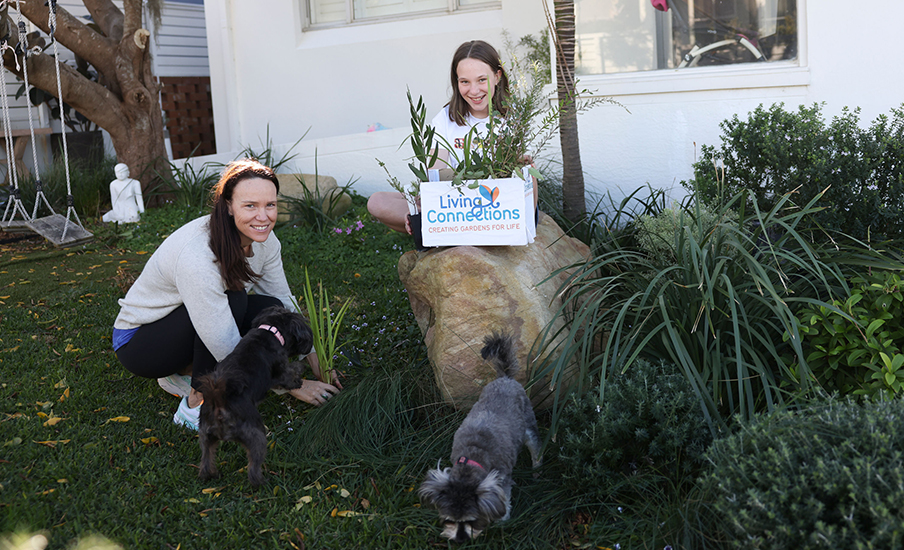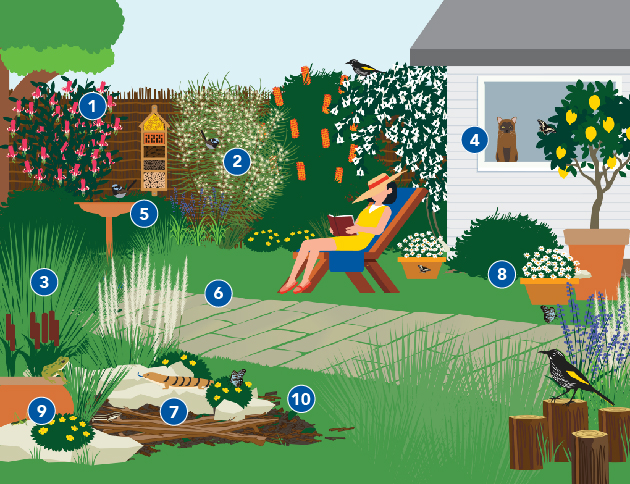Living Connections

Living Connections is a free Council program to help you transform your outdoor space into an urban wildlife habitat. This program is open to all residents of the Waverley Local Government Area (LGA) with a garden, courtyard or suitable balcony. Residents planting a verge garden are also eligible.
Founded in 2019 with assistance from the NSW Environmental Trust, over 400 private gardens, schools and community gardens have all contributed to grow Living Connections that help our native wildlife move around the neighbourhood.
Help us establish 1000 habitat gardens by 2032 and reconnect important habitat.
Living Connections participants receive:
- Free native plants (ground covers & shrubs)
- A copy of the Waverley Habitat Gardening Guide
- Living Connections fence sign to help spread the word
- You may also be able to receive a garden visit from a horticulturist, depending on the size of your garden
- Networking and support through the Living Connections Facebook group.
Participants will be asked to:
- Keep an eye out for wildlife in your garden, particularly Superb Fairy-wrens, New Holland honeyeaters, Blue-tongue lizards and microbats (insectivorous bats).
- Collect your new seedlings from one of our plant collections days
- Care for your new plants using instructions provided; and
- Keep your cats inside or in an enclosure to protect native wildlife.
We particularly welcome participants who live in an identified habitat corridor (see map here), as your garden could make a big difference to helping our local small birds thrive.
Join Living Connections
Living Connection is now closed until March 2026.
You can still apply using the link below, but will be contacted for the next program in March 2026.
| Apply Now |
Ten tips for a healthy habitat garden

- Diverse species, heights and habits
- Dense prickly shrubs for small bird shelter
- Cluster plants together to create mini ecosystems
- Keep cats indoors or in a pen to protect wildlife
- Provide water for birds and insects, put a few stones in to enable critters to climb out
- Grasses and ground covers to attract insects
- Rock and log piles for lizards
- Flowers with yellow, white and blue shades, particularly favoured by bees
- Ponds large or small
- Woodchip mulch to enrich the soil, retain moisture, stabilise temperature and keep weeds down.
Phil's garden
“When I applied to join Living Connections, I was simply seeking some expert advice and suitable plants to encourage the small native birds that used to visit the garden to return. I used to see Superb Fairy-wrens in the garden but haven't for years.
I was pleasantly surprised by the Living Connections kit that was sent out. In fact, so much so that I had a total rethink of my original idea for our yard. I completely changed my plan and removed all the grass to be able to create an endemic scrub that would be a haven for small birds.
I received 30 native seedlings through Living Connections, including Flax-leaf Heath Myrtle, Native Fushcia and Prickly-leafed Paperbark and planted them using the provided layout. I have since added to these seedlings and now have 90 new plants in the garden.
I added other habitat elements including a bird bath, rocks for lizards, mulch and logs. Since the transformation of the garden there has been a noticeable change in the behaviour of the native birds and insects visiting the garden.”

